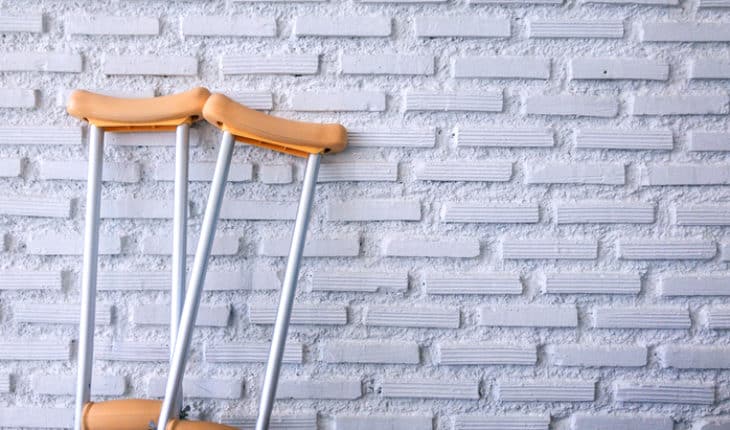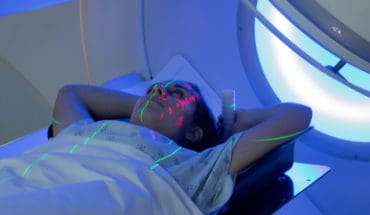Breaks, sprains or dislocations – what you need to know!
From skiing, slipping whilst running round the side of a swimming pool, trampolining … or just falling badly, they happen all the time, and they are tricky injuries to avoid. Whilst breaks and sprains are extremely common, it is difficult to know whether you have broken a bone or just have a soft tissue injury. Unless the bone is sticking out, or the limb is at a very peculiar angle, the only way to know for sure that a bone is broken is to have an X-ray. However, there are a few possible indicators, so here’s what you need to know.
- Pain – it hurts
- Loss of power, it can be hard to move a broken limb
- Unnatural movement – the limb may be at an odd angle and have a wider range of movement than normal
- Swelling, bruising or a wound around the fracture site
- Deformity – often limbs may be shortened, or the broken area could have lumps and bumps or stepping (with an injured spine it is uneven as you gently feel down their back)
- Irregularity – lumps, bumps, depressions, or stretched skin
- Crepitus – the grinding sound when the end of bones rub against each other
- Tenderness – pain at the site of injury
Faint and dizzy
You may feel faint, dizzy or sick as a result of the shock of breaking a bone.
You may not feel much pain or realise you’ve broken a bone if it’s a minor break or a small crack. However, if you think you have broken a bone though, you should seek medical help as soon as possible. For broken toes or fingers it’s best to go to a minor injury unit or urgent care centre.
Broken bones on their own, rarely cause fatalities. However, a severe break can cause the casualty to go into shock, particularly if there is bleeding associated with the injury (either internal or external bleeding). Shock is life threatening. If it looks like the casualty is going in to shock, keep them warm and dry and keep as calm as possible. Panic will not help their condition at all.
If you are at all worried about them, phone an ambulance.
A fractured pelvis or even a fractured hip can lead to serious internal bleeding. If these types of injuries are suspected, keep the casualty calm, still and warm and get the emergency services on the way as quickly as possible. If you have been taught how to stabilise a possible pelvic fracture, then it would be sensible to do this. Remember the pelvic cavity can collect a lot of blood and it is possible the casualty may start to show signs of shock. Should the casualty become pale, cold, clammy, feel sick, dizzy and look seriously unwell – update the emergency services and ensure they are on their way fast.
Different types of fractures
Open Fractures
If the bone is sticking out, the bone is broken and this is known as an open fracture! The main priority with an open fracture is to stop any bleeding without pushing on the bone or moving the broken limb at all – then call for emergency help.
It is important to keep the casualty warm and dry and observe for signs of shock. If they display any symptoms, lie them down, but do not elevate the injured limb. They are likely to need an ambulance to safely transport them to hospital.
Complicated fractures
With complicated fractures, muscles, nerves, tendons and blood vessels could be trapped and damaged by the broken bone. Should the casualty lose feeling in part of their limb, or if it changes colour, they will need urgent medical treatment.
Keep the casualty calm, warm and supported and phone for an ambulance.
Closed fractures
With a closed fracture, the bone has not come through the skin. Children commonly have greenstick fractures, where the bone doesn’t snap, but half breaks like a young sapling, rather than a bit of dead wood.
With closed fractures (and also with soft tissue injuries such as sprains and strains) – you should initially do the following:
Call an ambulance if:
- The casualty starts to show signs of shock
- There is a possibility that they have injured their spine or head
- They have any difficulty breathing or begin to lose consciousness
- It is an open fracture, with the bone through the skin
- If they lose feeling in the limb, or if it dramatically changes colour
- You are unable to safely transport the casualty to hospital yourself keeping the limb stable and supported
- There is a suspected pelvic or hip fracture
- You are worried about them in any way.
- What is a seizure? - 13th March 2025
- Febrile Convulsions and Seizures in Children - 13th March 2025
- Why women are less likely to receive CPR or survive cardiac arrest - 6th March 2025









